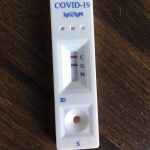Scientists in Japan are celebrating the birth of mice. Not such a big deal you may think, but these mice were conceived with sperm sent on a postcard! This is a technique, which could revolutionise the way human sperm is stored and transported in the future.
Current sperm storage and transport is expensive
Currently, for human use, sperm are preserved in liquid nitrogen and healthy offspring are obtained through artificial insemination or IVF after thawing. This has several drawbacks. For a start the ultra-low temperature of liquid nitrogen (−196°C) requires highly specialised equipment and means that it must be handled with extreme care. This is very expensive and requires a constant electricity supply.
It goes without saying that these conditions make the transport of sperm something of a headache and that a more convenient solution would be greatly welcomed by fertility specialists. Sperm has been freeze dried previously, but it was transported in glass ampoules. So, the trick was to find a more convenient transport medium. After experimentation the scientists found that weighing paper, a specialist, very lightweight laboratory-grade paper was perfect for the job.
Freeze dried sperm on a postcard
Dr. Daiyu Ito, Lead Scientist said, “When I developed this method for preserving mouse sperm by freeze-drying it on a sheet, I thought it should be able to be mailed on a postcard. So when offspring were actually born after being mailed, I was very impressed. The postcard strategy was easier and cheaper compared to any other method. We think the sperm never expected the day would come when they would be in the mailbox.”

The weighing paper technique allows for thousands of sperm to be held in a so-called sperm book rather than in hundreds of glass ampoules. At the moment the book has to be kept at -30°C, however, this is ordinary deep freezer territory compared to liquid nitrogen to be preserved for more than three days. This is the time they remain viable at room temperature, but the scientists are working to see if they can extend this to storing the book for one month at room temperature.
Sending sperm into space
That said, three days is easily enough time to mail sperm thousands of miles with no specialised protection. With this in mind, the group plan to use the technique to send sperm to the International Space Station, previously a problem because of the transport difficulties.
The scientists state that, although the technology is proven for mice, it will take time for the application to be used in humans as further experiments need to be conducted. However, it looks like there will come a time in the next decade or so when IVF patients may be able to order their own postcard/book from a sperm donor catalogue.


